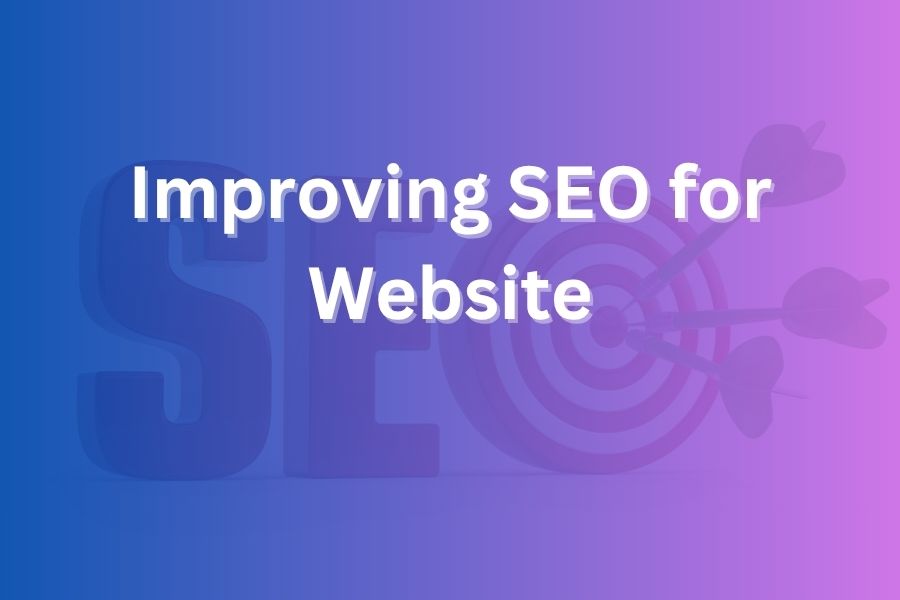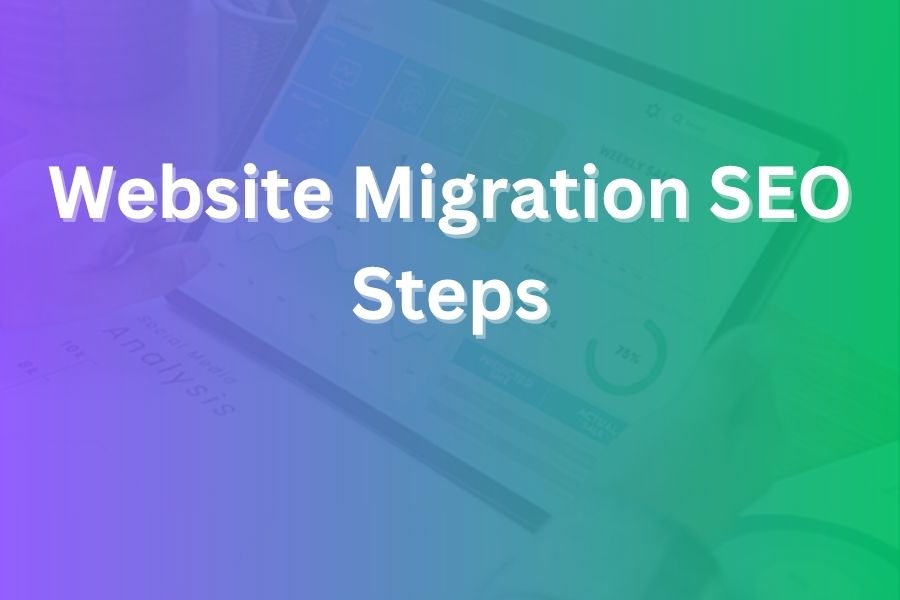
Whether you’re launching a new site or optimizing an existing one, focusing on improving SEO for your website is essential if you want visible results. With search engine algorithms evolving rapidly, you need a clear roadmap that balances technical excellence, engaging content, and smart user-experience design.
In this article you will learn how to audit your site, optimize content, enhance technical factors, build authority, and track meaningful metrics to lift your organic rankings in the U.S. market.
Audit Your Website and Set Clear SEO Goals
First, you must understand where your website stands and what you want it to achieve.
Begin with a full site audit: check for broken links, duplicate pages, slow loading speed, mobile-usability issues and thin content. These factors hurt rankings and user experience.
Next, establish measurable SEO goals: target keyword rankings, organic traffic volume, bounce-rate reduction, and conversions from organic visits.
Benchmark current performance using tools like your analytics platform and search-console data; this gives you a baseline against which to measure improvement. Define the primary keywords you want to rank for, map them to specific pages, and align each page with a user intent (informational, navigational, transactional). When you know what each page is meant to achieve, you can tailor the optimisation accordingly.
Setting this groundwork ensures your efforts are focused, measurable, and tied to real business outcomes rather than vague hopes.
Craft Content That Addresses User Needs and Search Intent
Content remains king in SEO. You must write for humans first and search engines second. Brief, jargon-free sentences, clear headings, and logical flow win both readers and rankings.
Understand the search intent behind your target keywords: are users looking for how-to guidance, a list of tools, or a comparison? Tailor your content accordingly.
Create pages that provide genuine value—unique insights, up-to-date data, real examples, and clear take-aways. Generic, rehashed content fails to stand out in today’s search results.
Use your primary keyword naturally: include it in your title, first paragraph, some subheadings and a few times in the body—but avoid keyword stuffing.
Structure your content with descriptive headings and sub-headings (H2, H3). They help readability and signal structure to search engines. Break up long paragraphs into shorter ones. Use bullet points or numbered lists sparingly when you need to list steps, benefits, or features.
Remember to update your content periodically.
Search engines favour pages that show freshness and ongoing relevance. If a page becomes outdated, refresh or replace it.
Master On-Page Optimisation Basics
Headings: Use one H1 per page. Use H2, H3 etc. for sub-topics. Ensure your keyword appears in the H1 or H2 and ideally in early paragraphs. Image optimisation: Use descriptive filenames and alt text for images to help both accessibility and SEO. Compress images to maintain performance.
Internal linking: Link to other relevant pages on your site using descriptive anchor text. It helps distribute authority, improves crawls and keeps users engaged. Schema markup: Where relevant, implement structured data (e.g., FAQ, products, reviews) so search engines can better understand your content and possibly display rich search results.
Focus on Technical SEO and Site Speed
Technical issues are silent ranking killers. If your site isn’t crawlable or user-friendly, content and links won’t save you. Ensure Google (and other engines) can access your pages the same way a visitor does. Avoid blocking CSS/JS or hiding important content.
Fix duplicate content and canonicalise URLs so that you don’t compete against yourself.
Mobile-first: The majority of searches now come from mobile devices. Make sure your site renders well on phones and tablets, with intuitive navigation and fast load times.
Site speed: Slow loading pages frustrate users and hurt conversions. Faster sites perform better in search. Use performance tools to audit, then optimise images, reduce server response time, implement caching and minimise render-blocking resources.
Secure website: Use HTTPS. Search engines and users expect secure connections.
Clean site architecture: Use logical hierarchy, breadcrumb navigation, and a sitemap. Ensure no orphan pages or deep pages hidden away from your internal structure. Avoid broken links, redirect chains, or orphan content. Clean up or redirect these to maintain a healthy crawl path and good user experience.
Build Authority with High-Quality External Backlinks and Brand Signals
Even the best content struggles to rank without authority and trust signals. Links from reputable sites and brand recognition matter. Focus on earning high-quality backlinks (not sheer volume). One link from an authoritative, relevant site is worth far more than dozens of low-quality links. Create linkable assets: original research, data analysis, infographics or unique tools can attract links naturally.
Guest posting, outreach, partnerships and digital PR still work—but ensure the content adds value, not just links.
Brand mentions and positive sentiment matter: Social proof, reviews, interviews and mentions (even unlinked) contribute to brand authority.
Monitor your backlink profile. Disavow spammy links if necessary. Keep the link profile natural and diverse. Internal linking also boosts authority inside your site. Link newer pages to older authoritative ones and vice-versa to spread value.
Enhance User Experience and Engagement Metrics
Search engines monitor how users engage with your site. High bounce rates, low dwell time, or slow interactions signal problems. Ensure your content is readable: legible font size, plenty of white space, mobile responsiveness and clear formatting.
Navigation should be intuitive. If people cannot find what they need within a few clicks, they leave. Use clear calls to action and guide users to the next step (read another article, download a resource, contact you, etc.).
Optimize for Core Web Vitals: metrics like Largest Contentful Paint (LCP), First Input Delay (FID) and Cumulative Layout Shift (CLS) reflect actual user performance and factor into rankings. Make sure your site is accessible and inclusive. Alt text on images, keyboard navigation, clear headings, and fast loading all help both users and search engines.
Target Featured Snippets and Person-Also-Ask Opportunities
Ranking in position 1 is great, but appearing in featured snippets or People-Also-Ask boxes elevates visibility further. Identify keywords you already rank for and check if they trigger a snippet or PAA box. If yes, optimize your page to fit the snippet format (definition, list, table, how-to).
Write concise sections (one or two paragraphs) that clearly answer the user’s question. For lists, use ordered/unordered HTML lists. Use tables to present structured data when appropriate. Monitor your rankings and snippet appearances. Adjust the snippet-targeted sections based on performance.
Track Performance, Learn and Iterate
SEO isn’t a one-time job. The best sites continuously analyse data, experiment and optimise.
Set up tracking for organic traffic, keyword rankings, click-through rates, engagement metrics (time on page, bounce) and conversions tied to organic visits. Use free tools like Google Search Console to monitor queries, impressions, clicks, and index coverage.
Review pages with declining performance. Are there algorithm updates, fresh competitor content, or lost backlinks? Act accordingly. Update content at least annually. Refresh statistics, add new insights, remove stale links, and expand sections where you see opportunity.
Document your tests and changes. If you test a new heading format, record performance before and after to determine what works.
Avoid Common SEO Pitfalls
Steering clear of poor practices is as important as adopting good ones. Don’t stuff keywords. Over-optimisation harms readability and triggers search engine penalties.
Avoid duplicate content across your site. If you must have similar content, canonicalise or redirect appropriately.
Stay away from manipulative link schemes. Low-quality links or paid links flagged as spam do more harm than good. Don’t hide content or rely on outdated tactics. Search engines view hidden text, doorway pages or irrelevant interstitials as red flags. Don’t publish unhelpful or thin pages just to “fill” your site. Each page should serve a purpose and provide value.
Prioritise a Long-Term Mindset for SEO Success
SEO is not a sprint. You need patience, consistency and adaptability. Results often take months, not days. Focus on sustainable practices that build trust with users and search engines. Quick-win hacks often backfire. Keep learning as the algorithms and user behaviour evolve. What worked last year may not be enough now.
Align your SEO strategy with your business goals. Organic search should support your brand, conversions and user satisfaction—not just rankings. By applying the above steps methodically, you’ll build a solid foundation that gives your website the best chance to rank, engage visitors, and drive growth.
Conclusion
Improving SEO for your website requires a balanced mix of technical precision, user-focused content and authority building. Start by auditing your site and setting measurable goals.
Then craft content that serves real user intent, optimise on-page elements, tighten technical performance, build legitimate backlinks, drive user engagement, and iterate based on data.
With effort, patience and strategic focus, your website will earn stronger visibility in search, more engaged visitors and sustainable growth in organic traffic.





